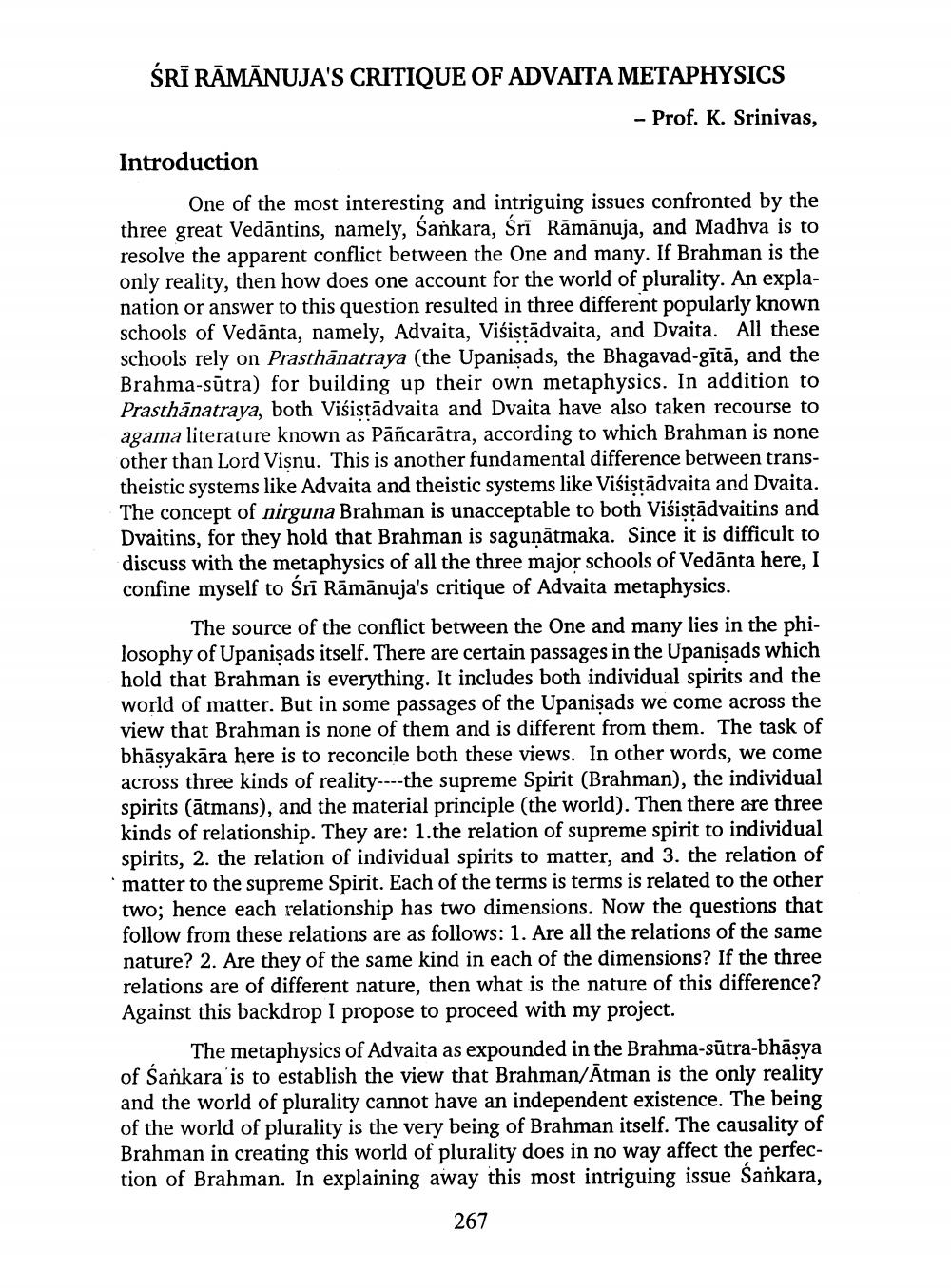________________
ŚRĪ RĀMĀNUJA'S CRITIQUE OF ADVAITA METAPHYSICS
- Prof. K. Srinivas,
Introduction
One of the most interesting and intriguing issues confronted by the three great Vedantins, namely, Sankara, Śrī Rāmānuja, and Madhva is to resolve the apparent conflict between the One and many. If Brahman is the only reality, then how does one account for the world of plurality. An explanation or answer to this question resulted in three different popularly known schools of Vedanta, namely, Advaita, Viśistādvaita, and Dvaita. All these schools rely on Prasthanatraya (the Upanisads, the Bhagavad-gītā, and the Brahma-sutra) for building up their own metaphysics. In addition to Prasthanatraya, both Visiṣṭādvaita and Dvaita have also taken recourse to agama literature known as Pāñcarātra, according to which Brahman is none other than Lord Visnu. This is another fundamental difference between transtheistic systems like Advaita and theistic systems like Visiṣṭādvaita and Dvaita. The concept of nirguna Brahman is unacceptable to both Visiṣṭādvaitins and Dvaitins, for they hold that Brahman is saguṇātmaka. Since it is difficult to discuss with the metaphysics of all the three major schools of Vedanta here, I confine myself to Śrī Rāmānuja's critique of Advaita metaphysics.
The source of the conflict between the One and many lies in the philosophy of Upanisads itself. There are certain passages in the Upanisads which hold that Brahman is everything. It includes both individual spirits and the world of matter. But in some passages of the Upanisads we come across the view that Brahman is none of them and is different from them. The task of bhāṣyakāra here is to reconcile both these views. In other words, we come across three kinds of reality--the supreme Spirit (Brahman), the individual spirits (ātmans), and the material principle (the world). Then there are three kinds of relationship. They are: 1.the relation of supreme spirit to individual spirits, 2. the relation of individual spirits to matter, and 3. the relation of matter to the supreme Spirit. Each of the terms is terms is related to the other two; hence each relationship has two dimensions. Now the questions that follow from these relations are as follows: 1. Are all the relations of the same nature? 2. Are they of the same kind in each of the dimensions? If the three relations are of different nature, then what is the nature of this difference? Against this backdrop I propose to proceed with my project.
The metaphysics of Advaita as expounded in the Brahma-sūtra-bhāṣya of Sankara is to establish the view that Brahman/Atman is the only reality and the world of plurality cannot have an independent existence. The being of the world of plurality is the very being of Brahman itself. The causality of Brahman in creating this world of plurality does in no way affect the perfection of Brahman. In explaining away this most intriguing issue Sankara,
267




